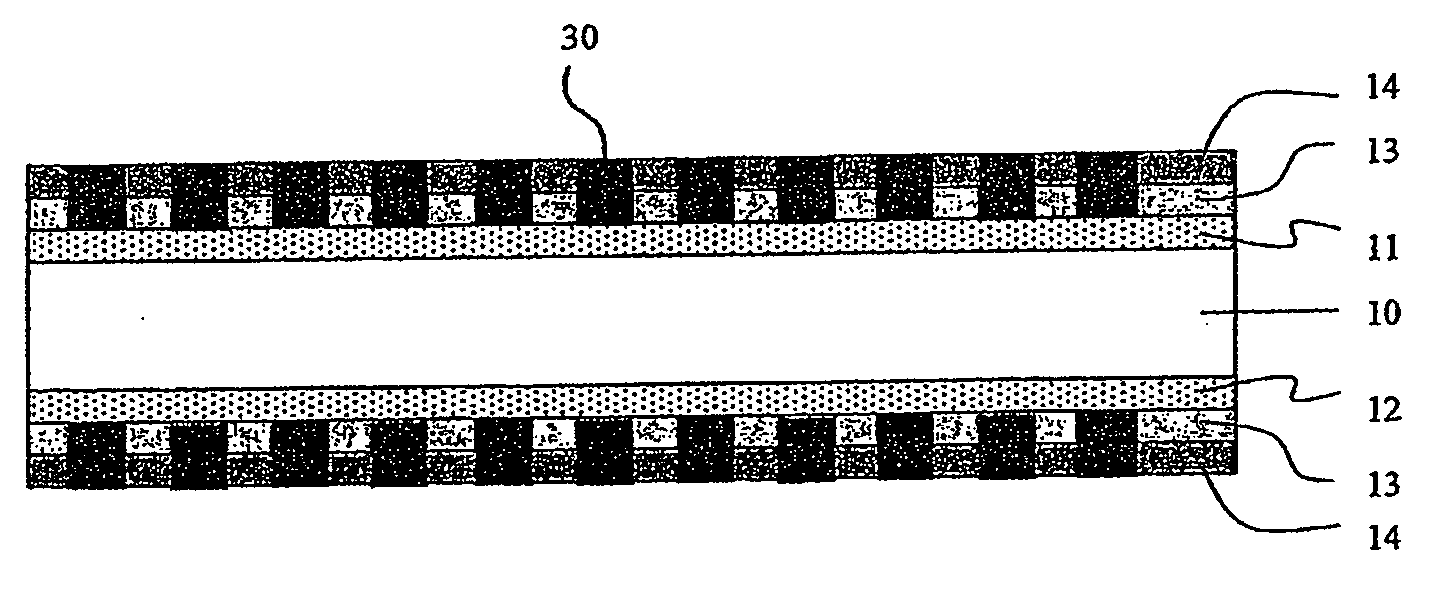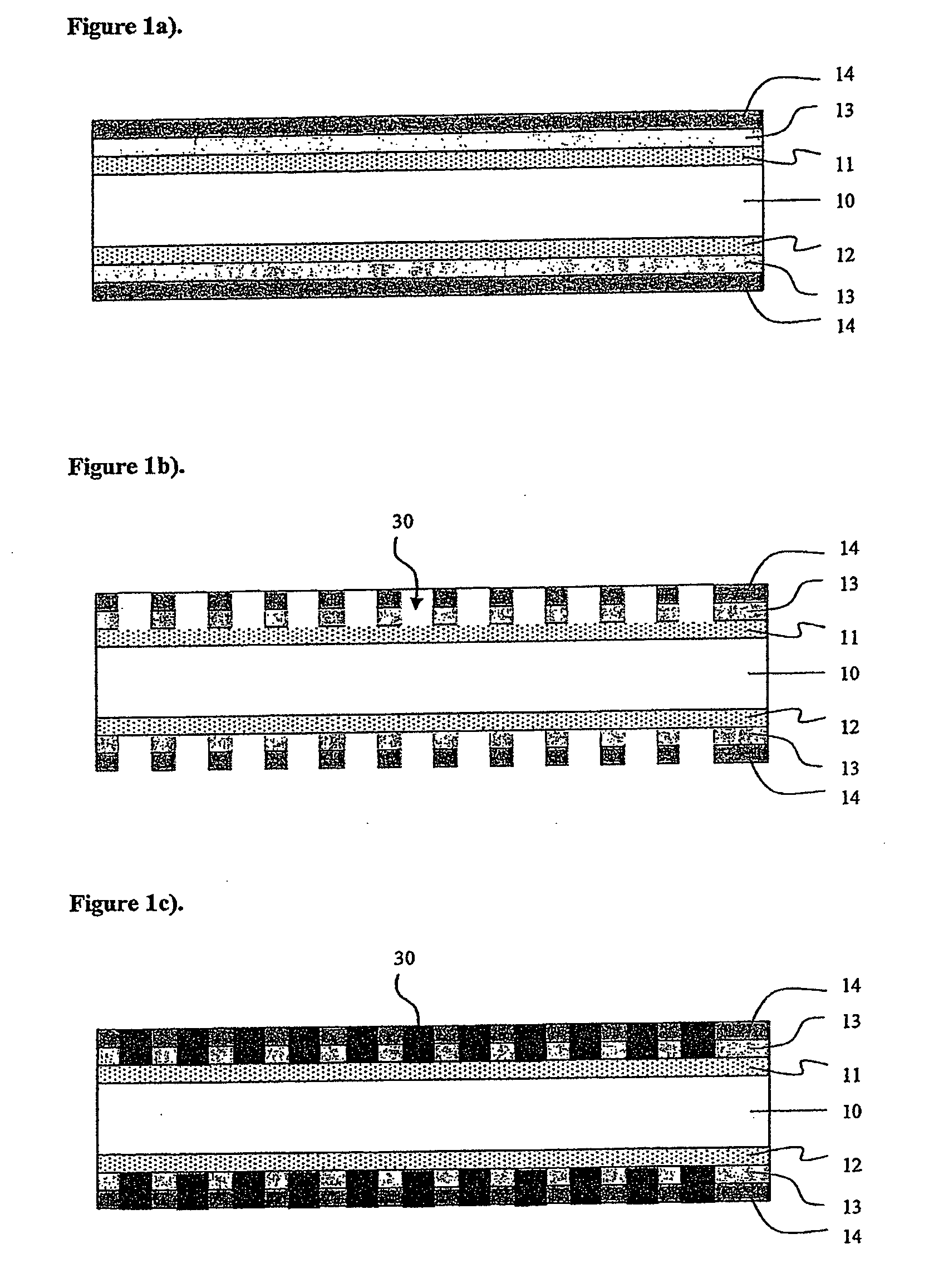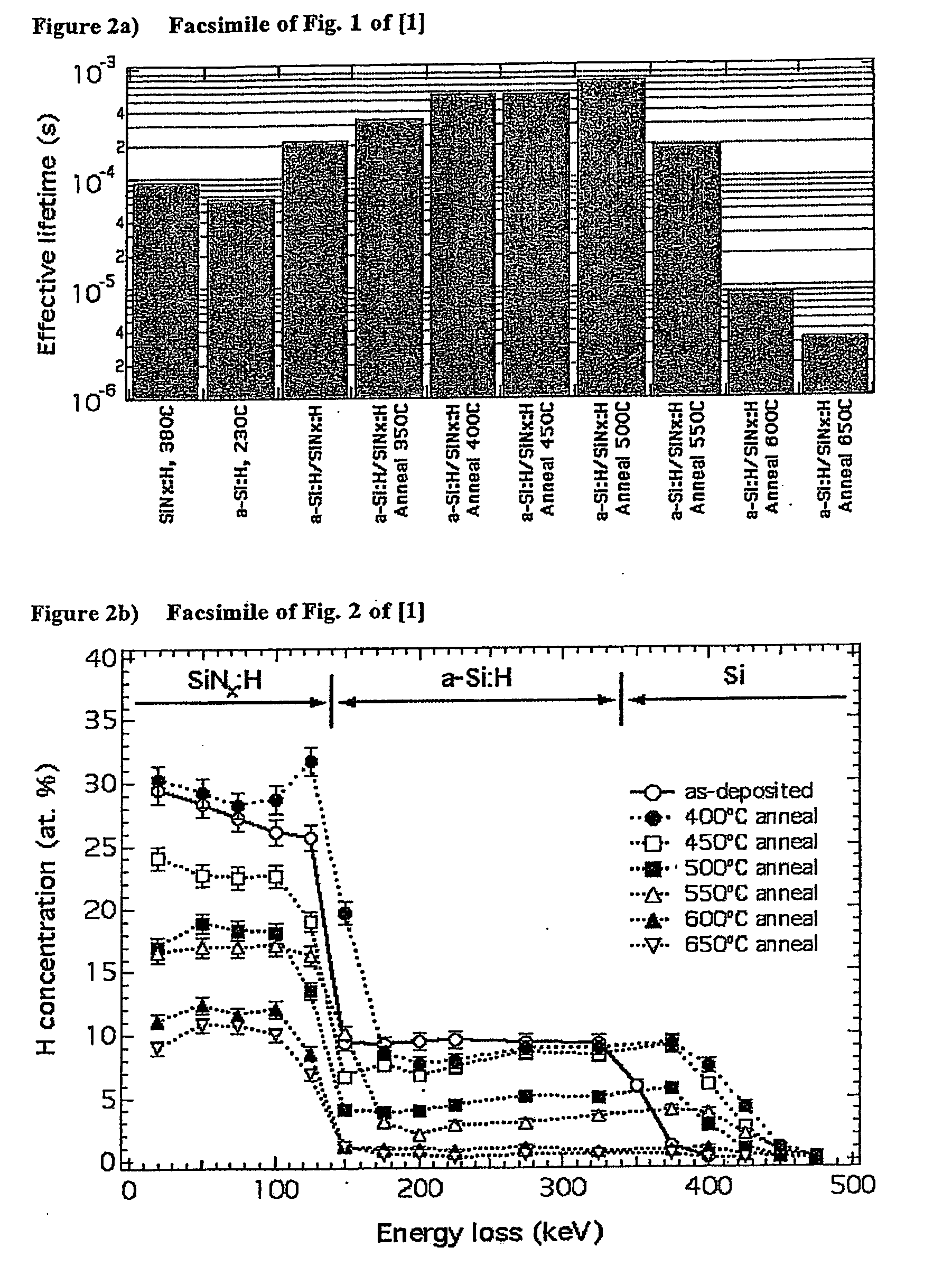Solar Cells and Methods for Manufacturing Same
a technology of solar cells and manufacturing methods, which is applied in the manufacture of semiconductor/solid-state devices, semiconductor devices, electrical equipment, etc., can solve the problems of reducing the surface recombination velocity by surface passivation techniques, affecting the subsequent processing of solar wafers to solar panels, and affecting the effect of solar energy generation
- Summary
- Abstract
- Description
- Claims
- Application Information
AI Technical Summary
Benefits of technology
Problems solved by technology
Method used
Image
Examples
Embodiment Construction
[0014]The objectives of the invention may be obtained by the features set forth in the following description of the invention and / or in the appended claims.
[0015]In a first aspect, the invention is based on the realisation that the contacting of a solar wafer containing one or more layers of thin dielectric, insulating or semi-conducting layers functioning as passivation layers may be obtained by first creating local openings in the passivation layer(s) and then fill the openings with a metal phase by use of for instance the electroplating technique to obtain electric contact with the underlying silicon substrate. In this way, it becomes possible to avoid the relatively high temperatures needed in the conventional method for contacting solar wafers containing one or more passivation layer(s), and thus maintain the excellent passivation properties of the passivation layer(s) during and after the contacting.
[0016]The opening of the one or more passivation layer(s) may be obtained by f...
PUM
 Login to View More
Login to View More Abstract
Description
Claims
Application Information
 Login to View More
Login to View More - R&D
- Intellectual Property
- Life Sciences
- Materials
- Tech Scout
- Unparalleled Data Quality
- Higher Quality Content
- 60% Fewer Hallucinations
Browse by: Latest US Patents, China's latest patents, Technical Efficacy Thesaurus, Application Domain, Technology Topic, Popular Technical Reports.
© 2025 PatSnap. All rights reserved.Legal|Privacy policy|Modern Slavery Act Transparency Statement|Sitemap|About US| Contact US: help@patsnap.com



